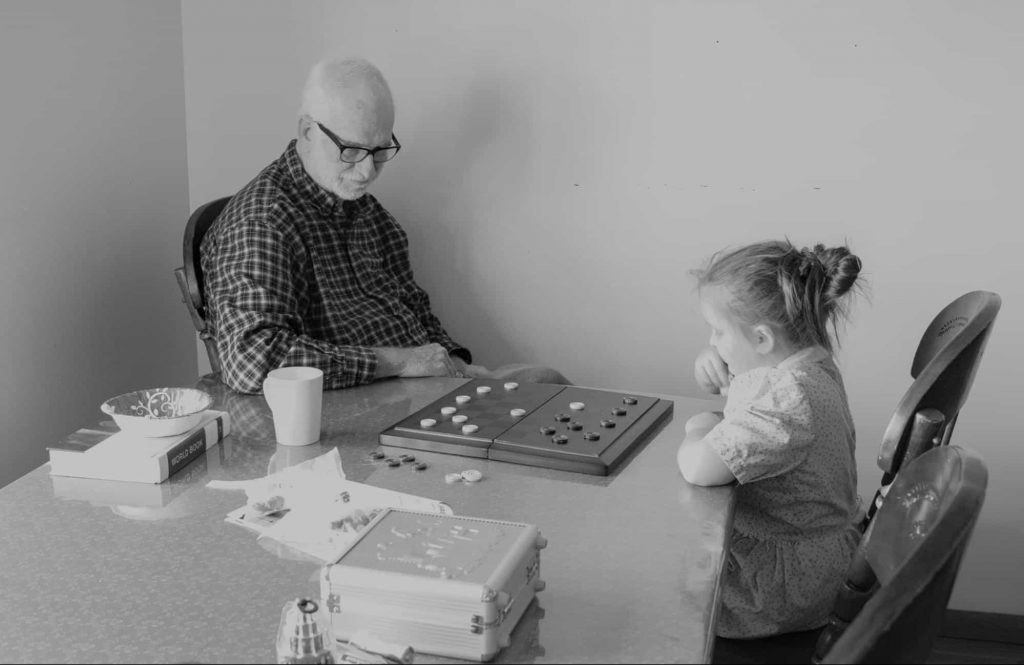Activities for Teachers to Do as Punishment Funny Punishments for Teachers
Table of Contents
- What is positive punishment?
- Effective positive punishment examples
- How does positive punishment work?
- Why use positive punishment examples in your class?
- The operant conditioning theory
- Some alternatives to positive punishment
- Positive punishment VS positive reinforcement
- Proven positive reinforcement examples
- Benefits of positive punishment
- FAQs
Positive punishment is a common form of discipline that presents something negative immediately after an undesired behavior—it intends to stop the unwanted behavior from happening again. The word positive refers to the addition of something, and the phrase punishment refers to decreasing or suppressing a behavior.
Punishing your children is never a fun thing for any teacher to do. However, as a teacher, you are responsible for teaching your students what is acceptable and not. To do this, you may use positive punishment examples.
What is Positive Punishment?

When we think of the word "punishment," we typically think of something negative, such as spanking a child when he throws a tantrum in Walmart. However, in the world of psychology, the term "punishment" refers to any consequence that has a suppressing effect on behavior – that is, it reduces the likelihood that the individual will perform that behavior again.
Positive punishment attempts to influence behavior by adding something unpleasant, while negative reinforcement attempts to exploit behavior by removing something unpleasant. The idea behind positive punishment is to make a behavior less likely to occur in the future.
Effective Positive Punishment Examples

Positive punishment is a type of operant conditioning. Operant conditioning is a learning method that focuses on the consequences of behaviors. In positive punishment, the goal is to decrease the behavior by presenting an aversive or unpleasant stimulus following a behavior.
The key to positive punishment is that it must be paired with undesirable behavior to be effective. Positive discipline can be very effective in decreasing unwanted behaviors.
Teachers who use positive punishment examples in their classrooms can better connect with students and build relationships with them over time. Students will respond positively to this method of discipline and learn how to behave appropriately in a classroom setting.
Some positive punishment examples include:
- Take away something special from the child, such as his favorite toy or a piece of candy, for a set amount of time. This could be a day, week, or month depending on what the teacher believes is best for her students' needs and circumstances.
- Telling the misbehaving child that he is not allowed into the classroom until he has cleaned up his desk.
- A student throws her papers on the floor after getting frustrated with an assignment. Her teacher makes her pick them up, and she won't ever throw them on the ground again because it's too much work.
- A student is speaking out of turn in class. His teacher takes away his prize pencil and gives it to another student. The student doesn't like this and stops talking out of favor.
- When a student misbehaves, they are given detention. When they receive the detention, they misbehave less in the future because they don't want another detention.
- If a student is not paying attention in class and you want them to pay attention, you might prevent them from going outside during recess. You can also make them stay in during recess.
- If your student hits his classmate, you will give him a time-out as a consequence for hitting. You're adding the ease after the behavior you don't want him to do (hitting).
- If a child is acting up in class and talking out of turn, a teacher may send them outside of the room until they have calmed down as a way of positively punishing their behavior.
- The teacher may assign the extra student work, such as an essay or page of math problems, due to misbehaving or not following directions.
- A student who swears at another student could be asked to apologize and clean up the trash on the school grounds.
How does Positive Punishment Work?

Positive punishment works by adding something harmful to the situation when a behavior occurs. Teachers often think of positive punishment as taking something away but adding something undesirable to decrease a behavior. This can be confusing because the term "positive" means that something is added, not that it has a good result.
To understand how positive punishment examples work, it is essential to comprehend how operant conditioning works in general.
Operant conditioning occurs when a person learns from their actions and behaviors based on the consequences that follow them. B.F Skinner first introduced this theory in 1938 and used animals as his main subjects for testing. He observed how animals reacted to different stimuli during specific situations and how that affected their future behaviors and actions.
Why Use Positive Punishment Examples in Your Class?

Positive punishment is one of the four quadrants of operant conditioning. Operant conditioning is a learning process that involves increasing or decreasing behaviors using specific techniques. Positive discipline is one of those techniques.
So, why would you use positive punishment? Well, if there is a behavior you want to decrease, such as talking during class or not turning in homework, then some positive punishment examples might be the perfect solution. It works by adding something the student does not like to decrease the unwanted behavior in the future.
For example, if you do not like to eat spicy food, but someone tells you that they will add hot sauce to your meal if you are late for dinner again, it might help decrease your lateness because you do not want anything spicy added to your meal.
The Operant Conditioning Theory
Operant conditioning is a type of learning in which rewards and punishments for behavior make that behavior more or less likely to occur in the future. B.F proposed it. Skinner believed that we tend to repeat behaviors with good consequences or stop behaviors when they lead to dire consequences (Skinner, 1938).
There are essentially four types of operant conditioning: positive reinforcement, negative reinforcement, positive punishment, and negative punishment.
Positive Punishment
Positive punishment means something is added to the situation to decrease the behavior. For example, if a student talks out of turn in class, the teacher could respond by adding detention after school.
Positive Reinforcement
Positive reinforcement means something is added to the situation to increase the behavior. For example, if a student is working hard in class, the teacher could respond by adding a good grade on a test.
Negative Punishment
Negative punishment means something is removed from the situation to decrease the behavior. For example, if a student is talking out of turn in class, the teacher could respond by taking playtime at recess.
Negative Reinforcement
Negative reinforcement means something is removed from the situation to increase the behavior. For example, if a student comes to class without their book, they get rewarded by going back home and getting it.
Some Alternatives to Positive Punishment

When positive punishment is used in the classroom, it can create many adverse side effects, including fear, anxiety, and aggression. In extreme cases where students are subjected to continuous negative reinforcement, they may shut down emotionally. This is why teachers must find alternatives to positive punishment examples in the classroom.
Here are some alternatives to positive punishment in the classroom:
1. A Time Out
Teachers use time-out when children show aggressive behavior like hitting or throwing things. It teaches children that if they respond aggressively to a situation, they will lose access to preferred items or activities (e.g., recess).
2. The Token Economy System
The token economy system is a system in which teachers reward good behavior with tokens exchanged for items or privileges later on (e.g., extra credit for completing homework).
3. Negative reinforcement
The teacher would let him go back to recess as soon as he apologized to his classmate.
4. Modeling example
The teacher would ask another student to show how he could apologize to his classmate.
5. Positive reinforcement
The teacher would praise him for apologizing to his classmate and let him go back to recess.
Positive Punishment vs. Positive Reinforcement

Positive reinforcement and positive punishment are two types of operant conditioning used in the classroom. Both types of conditioning are used to alter students' behavior, and both types of conditioning can be used to either increase or decrease behavior. The difference between these two types of conditioning is how they are applied.
Positive reinforcement involves giving a student something they like or want, while positive punishment consists of providing them with something they dislike or do not want.
Positive reinforcement and positive punishment should be used sparingly in the classroom for best results. Teachers should use positive reinforcement to reward students who perform well and have good behavior.
In contrast, teachers can use positive punishment examples with students who misbehave or do not perform well. In both cases, it is essential to use these techniques only sometimes so that the student does not expect the reward or consequence every time they exhibit the behavior.
Using positive reinforcement and punishment will help mold better student behavior in your classroom. Still, it is essential to use these techniques sparingly and only when necessary for best results in your classroom management plan.
Effective Positive Reinforcement Examples

The concept of positive reinforcement is often misunderstood, and sometimes people even get it confused with positive punishment.
The difference between the two is quite simple. Unlike punishment, which aims to decrease inappropriate behavior, positive reinforcement aims to increase appropriate behavior, and it's one of the most effective strategies a parent or teacher can use to shape and strengthen specific actions.
Here are some examples of how you can use positive reinforcement as an alternative to positive punishment in the classroom:
- Reward participation in-class activities by giving extra credit or moving students ahead on a class project.
- Give students stickers as a reward for keeping their desks clean or having their homework completed correctly. You can take away points for older students if they don't have their tasks completed correctly.
- Provide free time to students who adhere to a predetermined list of classroom rules at the end of class.
- Give students a candy bar for turning in homework on time.
- Add stickers on a chart when goals are reached.
- Greet them with a smile and a thank you after completing a task.
The Benefits of Positive Punishment

Positive punishment teaches an individual that a particular behavior is not acceptable because something unpleasant has been added due to that behavior.
Positive punishment is used to help decrease an undesired behavior. The goal is to create new behaviors to better adapt and succeed in their environments.
Positive punishment examples can be effective in teaching your students to behave. However, Teachers must punish students immediately after the unwanted behavior has occurred. If you wait too long, it will not work because your students may not connect the punishment with the unwanted behavior. This can result in your students misbehaving and not knowing why they are being punished.
Here are the benefits of positive punishment:
- It stops the behavior immediately.
- It works very quickly and can halt negative behavior right in its tracks.
- If done consistently, it is effective.
- If you always punish your children for talking back, they will learn never to talk back again.
- It teaches them what NOT to do next time.
Wrapping Up
Positive punishment is a valuable tool for teachers to help maintain order in the class. It is one way to combat indiscipline behaviors and retain control in the classroom. While other strategies may be more effective, positive punishment examples have their place.
In the end, it is always easier to prevent bad behavior than it is to fix bad behavior after the fact. We are committed at SplashLearn to continue evolving our suite of classroom management solutions that help teachers and school administrators do just that.
Frequently Asked Questions
What is an example of positive punishment?
An example of positive punishment is scolding a student to stop texting in class.
Is detention one of the positive punishment examples?
Yes, detention is an example of positive punishment.
What is positive punishment?
The goal of any punishment is to reduce the behavior that it follows. Positive punishment involves presenting an unfavorable outcome or event following an undesirable behavior.
What kind of punishment is the most acceptable in schools?
Natural consequences are the best form of positive punishment examples because they teach your children about life.
Source: https://www.splashlearn.com/blog/practical-positive-punishment-examples-how-to-discipline-students-in-an-uplifting-way/
0 Response to "Activities for Teachers to Do as Punishment Funny Punishments for Teachers"
Publicar un comentario